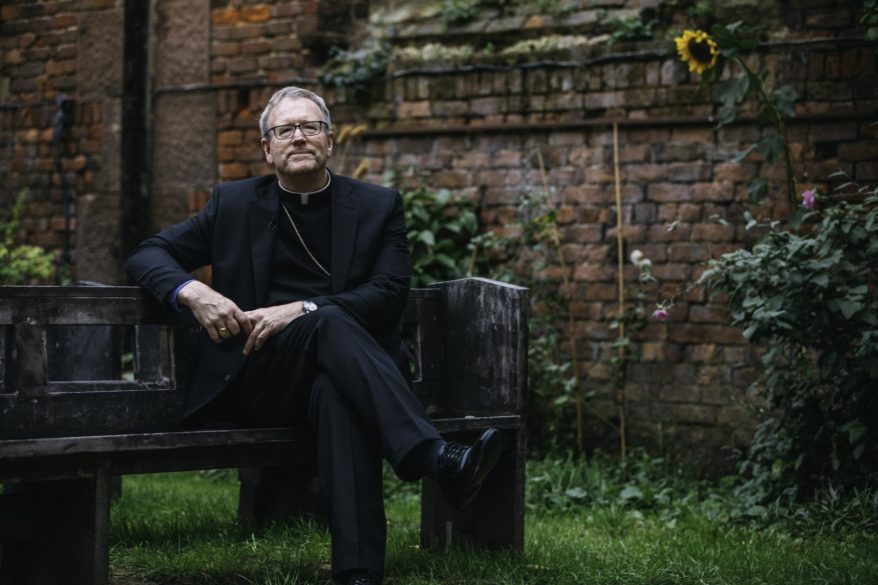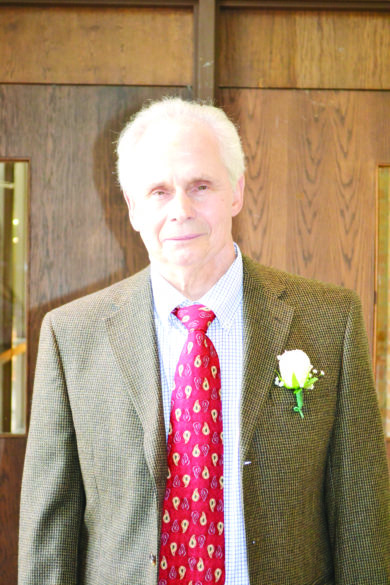GUEST COLUMN
By James Tomek, Ph.D
The Eucharist, being the theme of this liturgical year, inspired Bishop Joseph Kopacz to send priests, deacons and lay ecclesial ministers Bishop Robert Barron’s Eucharist, a study of the Mass, an elaboration on the aspects of meal, sacrifice and real presence of Christ.
Reading Bishop Barron’s book will help us be better Mass attenders. While Father Dennis Gill’s Ars Celebrandi details the structure of Mass; Bishop Barron concentrates more on three basic themes: the sacred meal, where “communion” takes place; sacrifice, that makes the communion possible; and the real presence of the host, that makes the meal possible.
After Bishop Barron’s comparison of Babette’s Feast and the Mass, this review will expound the themes of meal, sacrifice and real presence, hopefully to sit us better at the table with Christ – like the disciples at Emmaus in Luke’s Gospel.
Bishop Barron opens his thesis with a comparison of the Mass and Isak Dinesen’s Babette’s Feast, a short story and a 1987 film about how a servant, saved by two sisters, rewards them and their puritanical diminishing congregation with a lavish meal.

The two sisters took in a starving Babette. Their father was the pastor of a small Lutheran community. When Babette, who was a chef at the “three star” Café Anglais in Paris, wins a lottery, she decides to use all the money to cook a fabulous haute cuisine dinner, with multiple courses, for the remaining community. The dinner, which slowly pleases their bodily senses, also increases their soul senses as they become better acquainted with each other.
Babette’s sacrificial meal inspires Robert Barron to compare her to Christ, as her real sacrificial chef presence transfigures the dinner into a sacred meal where all the guests’ lives are raised physically and spiritually.
Bishop Barron compares the meal to God’s creation (20) as God showed Adam and Eve how and where to eat (Genesis 2:15-17), with the meal being God’s plan for unity. (24) Citing many biblical references, like the Passover, Bishop Barron shows that the meal is also the place for teaching. Divine teaching takes place with Jesus. (27) The feeding of the five thousand stands for nourishing a hungry human race, famished for the right kind of food. (30)
Bishop Barron goes through the entire story of creation, the fall, the formation of Israel, the passover to freedom, Isaiah’s holy mountain to Jesus’s table fellowship and the Last Supper, pointing to the sacred meal’s goal of universal fellowship (eschatological banquet – the word we use for how we want things to end), which is made present to us at Mass.
The table for the meal is also the altar for the sacrifice. Covenants in the Old Testament were sealed with some forms of sacrifice. Jeremiah wanted the covenant to be written on our hearts, where we would know instinctively the right things to do (sacrifice means “holy doing”). Bishop Barron reminds us that at the Last Supper, Jesus invites his disciples to “ingest” his sacrifice – to imitate Jesus’s actions. (66-8)
In my studies of controversial issues of the Mass, the concept of “sacrifice” was more controversial than that of “real presence.” Does Jesus have to die again?
Bishop Barron reminds us that we really “re-present” Jesus’s sacrifice, with our intention to imitate it.
“I am suggesting that pain, consciously aligned to the sacrifice of Jesus can be spiritually transfiguring. Thus, the sufferer becomes not simply the person in pain, but Abraham giving away what he loves the most, Moses enduring the long discipline of the desert … or the crucified Messiah wondering why he has been forsaken by the Father.” (71)
The Liturgy is the re presentation of the sacrifice of the Lord. At Mass, we, if paying attention, not only witness the event of the Cross, we participate in it. (71-2) With the sacred and sacrificial meal, we are at a place where sins can be forgiven and friendship restored. (72)
In the chapter on real presence, Bishop Barron cites the great “Catholic” writer Flannery O’Connor’s response to the Eucharist as a symbol saying, that if it is a symbol, to hell with it. (73) O’Connor and Barron, in this chapter, are defining “symbol” in its arbitrary sense (for example, the bulldogs of Mississippi State point to their tenacity). There are other uses of symbols as expressions of meaningful experiences that Bishop Barron uses throughout the book, but, here, he is stressing the real presence of Jesus and wants to avoid the term “symbol.”
Bishop Barron explores chapter six of John’s gospel where Jesus says that he is the bread of life and tells his disciples that they must follow him by eating his flesh. (78-9) He contends that the Incarnation of God into the world requires the real presence of Christ. (81)
Is it the actual flesh and blood of Jesus that we consume at Mass? I was taught that it is the glorified real presence of Jesus.
To help us, Barron explains Aquinas’s interpretation of sacrament and real presence. All sacraments are designed to place the spiritual life within human beings. Just as we digest material food for our bodies, the Eucharist is ingested for our life of grace. Aquinas calls Jesus’s flesh “proper species,” which become the “sacramental species” that we consume at Mass. (91-3)
The Mass is the prolongation of the Incarnation. Jesus’s real presence is in all parts of the Mass. Bishop Barron includes the scripture readings at Mass too as he cites Origen’s thesis that the real presence of Jesus is also in the “Word” of God, which can stand both for Jesus and the Bible itself. (82)

Sacred meals end with a mission. Bishop Barron concludes his thesis referring to Jesus appearing to the disciples at Emmaus in Luke’s Gospel.
The two disciples meet the “glorified” Jesus, who explains to them the events of the crucifixion and resurrection. They invite Jesus to dinner and finally recognize him when he breaks the bread. Jesus then disappears.
Bishop Barron sums up the Mass by placing us back in time at Emmaus. (111) We come to Mass like the two disciples and beg for Jesus’s mercy. Jesus forgives us by opening up the scriptures for us. We need the meal to fully be conscious of who Jesus is, and we see him in the breaking of the bread. Jesus then disappears and we are sent to continue his mission. Thank you for the lesson, Bishop Barron.
(James Tomek is a retired language and literature professor at Delta State University who is currently a Lay Ecclesial Minister at Sacred Heart in Rosedale and also active in RCIA at Our Lady of Victories in Cleveland.)
